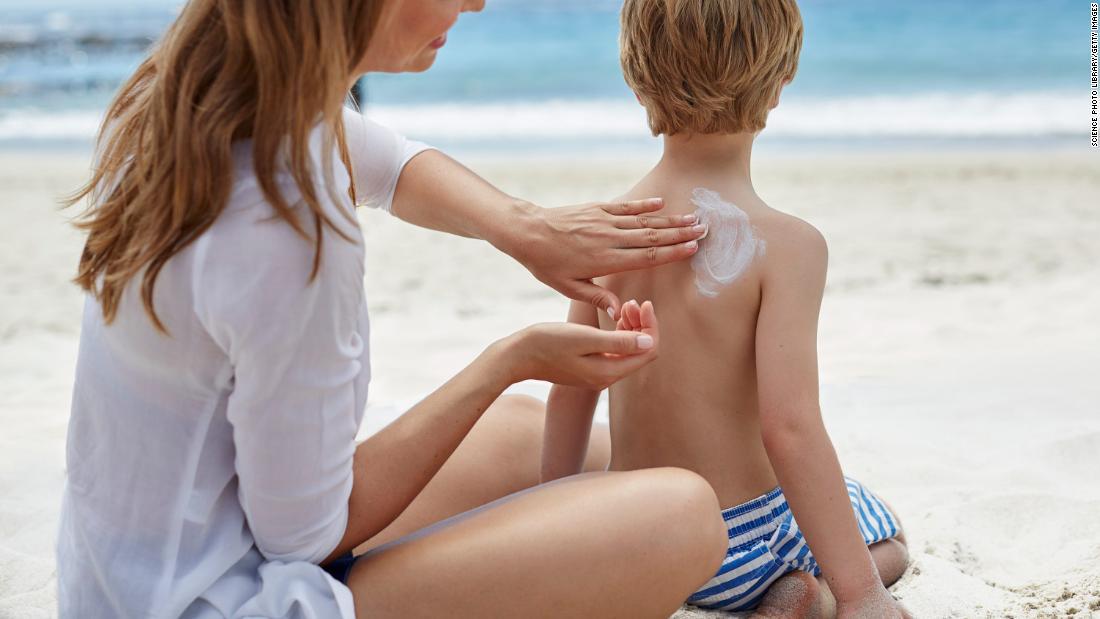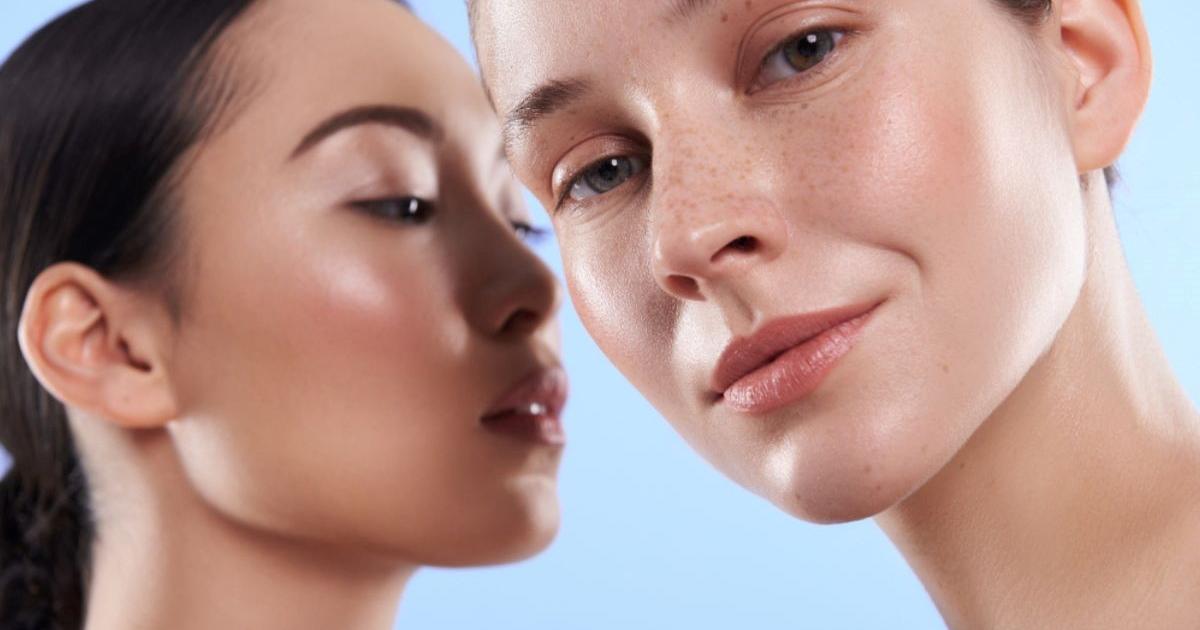How to protect yourself from the sun's rays?
2:12
(CNN) -
When choosing sunscreen for summer fun, be sure to avoid products with harmful chemicals and false advertising claims, according to the 15th Annual Sunscreen Guide published by the Environmental Working Group. Environmental), a consumer organization that advocates for environmental safety.
This year, the EWG analyzed 500 more sunscreens, bringing the total to more than 1,800 products, and found that 75% either did not offer adequate sun protection or included ingredients considered harmful.
"The answer is not to despair and say that no sunscreen is safe," said Nneka Leiba, vice president for healthy life sciences at the EWG.
"There are at least 200 recreational sunscreens in our database that got the go-ahead."
Additionally, consumers should always rely on safe sunbathing practices first, and then sunscreen application, experts say.
Sunbathing reduces the risk of stroke
“A good T-shirt blocks the sun's rays much more effectively than a bad sunscreen.
The fabric provides a small space between the skin and the rays, and is also responsible for occluding a large part of the rays, "says Leiba.
These tips will help you take care of your skin 1:44
"Covering your skin, wearing hats, avoiding the midday sun and being careful with children, because of their increased susceptibility" are good options, Leiba said.
"There are many tools in that sunscreen toolbox - sunscreen is just one of them."
advertising
Sunscreen chemicals in the bloodstream
According to the US Food and Drug Administration (FDA), after a single application, a total of seven chemicals commonly found in sunscreens can be absorbed into the bloodstream. levels that exceed safety thresholds.
An FDA study revealed that after four days of sunscreen use, study participants continued to have unsafe levels of two of the chemicals (oxybenzone and homosalate) in blood samples taken 21 days after subjects stop using them.
This does not necessarily mean that sunscreen products are unsafe, according to the FDA, but manufacturers must conduct proper safety testing.
The 5 best beaches in the world 1:01
These chemicals are among a dozen that the FDA has been asking manufacturers for years to investigate so they can be considered GRASE, or "generally recognized as safe and effective."
In addition to oxybenzone and homosalate, the chemicals that need safety testing are avobenzone, octinoxate, octisalate, octocrylene, cinoxate, dioxybenzone, ensulizol, meradimate, padimate O, and sulisobenzone.
A 2008 study conducted in Switzerland found oxybenzone or one of four other sunscreen chemicals in 85% of breast milk samples, sparking concerns that newborns might be exposed.
A 2010 study found another commonly used chemical, octinoxate, in breast milk.
Research has shown a possible link between oxybenzone and decreased testosterone levels in adolescents, hormonal changes in men, and shorter pregnancies and changes in birth weight in babies.
Oxybenzone and octinoxate have also been linked to damage to coral reefs and marine life.
Currently, Hawaii, the US Virgin Islands, Key West and the Pacific island of Palau prohibit the use of sunscreen products containing oxybenzone and octinoxate, and other places around the world are proposing to do the same.
Hawaii bans synthetic sunscreens to preserve corals 0:39
Mineral options
For those concerned about chemicals getting into the bloodstream, there are two types of mineral (non-chemical) sunscreen ingredients considered safe and effective by the FDA: titanium dioxide and zinc oxide.
Sunscreens made from minerals physically deflect and block the sun's rays, unlike sunscreens with chemical filters that absorb UVB rays and release heat as they break down.
Another plus: the mineral ingredients don't seem to harm the environment.
US kids could go to summer camp 1:17
The number of mineral-containing products has grown as consumers seek products that are safer for human health and the environment, said Carla Burns, senior analyst for healthy living science at the EWG.
"This year, about 45% of all products in the guide contain mineral active ingredients, either zinc oxide, titanium dioxide or a combination of both," Burns said.
"We are definitely seeing an increase in the last three to five years of daily use moisturizers with SPF (sun protection factor) based on mineral ingredients," he added.
At the same time, another trend is taking place: the reduction in the use of oxybenzone in US products.
"Two to three years ago, 60% of non-mineral products contained oxybenzone," Leiba said.
«Last year it was only 40% and this year it is 38%.
So we've definitely seen a drop in oxybenzone in the last two years. "
Misleading statements
"Sun Protection Factor," or SPF, is what most Americans look at when choosing sunscreen - the higher the SPF, the better, right?
It is not like this.
According to the FDA, choosing an SPF of more than 100 does not protect more than a sunscreen with an SPF of more than 60. This is because there is no reliable data to show that sunscreens can protect beyond one SPF level. 60+.
According to the FDA, labeling sunscreens with higher levels could give users a false sense of sun protection.
"More than one in ten of the sunscreens we have reviewed claim to have an SPF greater than 50+."
The Environmental Working Group advises consumers to avoid products that claim to have an SPF greater than 50+.
Vaccinated Americans May Travel to Europe 0:24
Additionally, SPF only applies to UVB rays that cause sunburn and not UVA rays, which experts say penetrate deeper into skin tissue, causing aging and long-lasting damage to skin cells.
Three tips to take care of your skin from sun exposure
This is why dermatologists recommend always using a "broad spectrum" sunscreen, which protects against both UVA and UVB rays.
A chemical additive, avobenzone, and a mineral option, zinc oxide, provide the best UVA protection currently available in US sunscreens, according to the EWG.
There are more protection options in Europe, but they have not been approved by the FDA for use in the United States.
Titanium dioxide and zinc oxide protect against both UVA and UVB rays, although titanium dioxide is moderately effective against UVA rays, according to the EWG.
Another note of caution: some sunscreen manufacturers are adding anti-inflammatories to reduce skin redness, the tell-tale sign of sunburn that is a clear sign of skin damage.
Look for botanical extracts like licorice, chamomile and aloe, says the EWG, that don't protect against harmful rays.
Beware of aerosol sunscreens
Another aspect of concern to the FDA is the potential danger posed by spray and powder forms of sunscreen application.
Aerosols are potentially flammable, and both aerosols and powders can enter the lungs if the particles are small enough.
Any particle 10 microns in diameter or smaller poses the biggest health problems.
These can penetrate deep into the lungs and could cause irreversible damage.
"We know that titanium dioxide, when inhaled, either as a powder or in an aerosol, can have carcinogenic effects, that is, it has been linked to cancer," Leiba said.
The FDA has proposed testing all spray and powder sunscreens, but this has not yet begun.
Due to the lack of definitive evidence, the EWG recommends avoiding all aerosol products.
Unfortunately, the 2021 EWG report revealed that the number of aerosol sunscreens on the US market has been increasing over the years.
Consumers seem to like the convenience of a quick burst of spray.
"More than a quarter of the sunscreens featured in this year's guide are in aerosol form, which is about 260 different products," said Leiba.
There's another reason that sprays and powders aren't good sun protection, experts say.
It's too easy to miss a point or come across a breeze that could blow sunscreen away from your skin.
"The average American doesn't sit around and hold a spray or a spray long enough to get that adequate coverage," Burns said.
"We suggest consumers opt for a lotion or stick product to ensure they can get coverage that is applied evenly."
You may also be surprised by the actual amount, extent, and timing of sunscreen to be applied to your skin.
The American Academy of Dermatology recommends applying at least 28 grams, or the equivalent of two tablespoons, of sunscreen to all exposed skin every two hours or after swimming, including "the back, neck, face, ears, face. upper part of the feet and legs'.
"If you use the right amount of sunscreen, you will use up that product pretty quickly," Burns said, so "one bottle shouldn't last several years."
"We also want you to check your product before use, especially if you leave it in a hot car," he added.
"If there is some kind of separation or it is lumpy or it is not a perfect mix, then throw it away and get a new bottle."
Sunscreen







